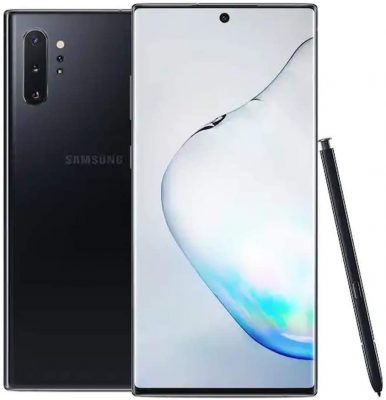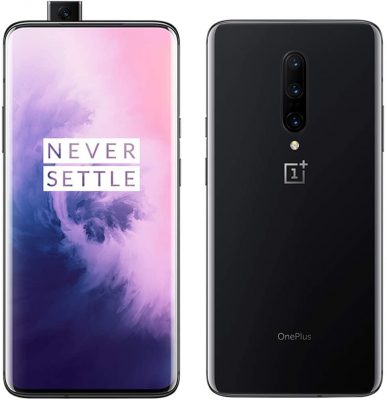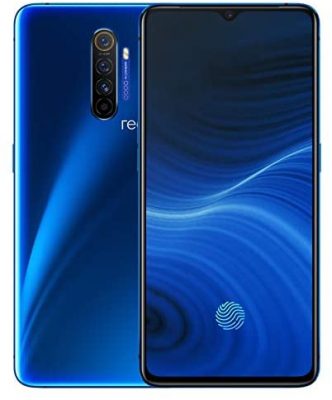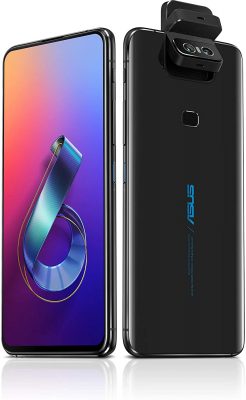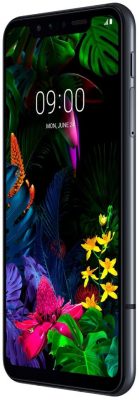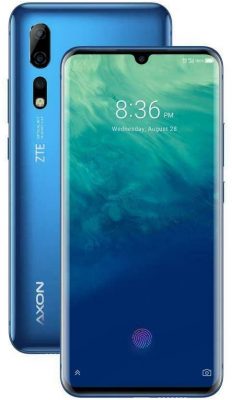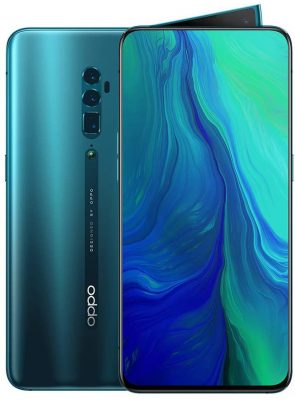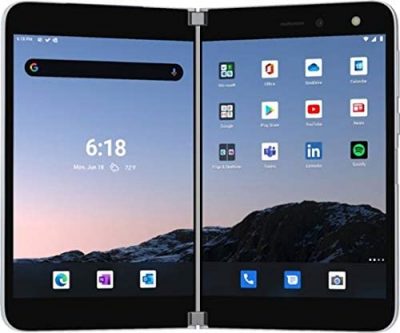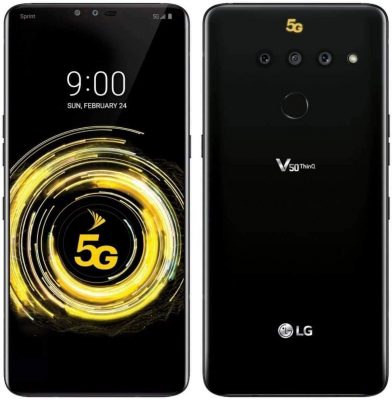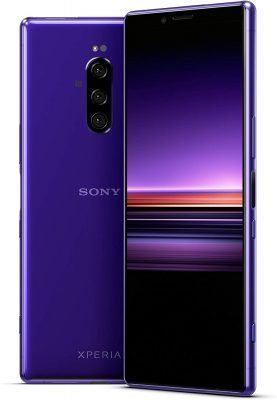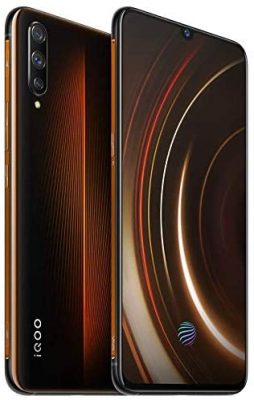Every year, we scour the internet for an answer to a question that is so simple but offers endless possibilities: which are the best and latest phones that are coming out of multiple original equipment manufacturers (OEMs)? The answer seems endless and options stretch from mid-range to high-end ones. We all know the power of Samsung or OnePlus and the likes. But have you considered Qualcomm’s Snapdragon 855 mobile platforms?
We will go over some of the most recommended Snapdragon 855 phones and help you choose which phones to get — flagship-killers and budget options considered.
What Is Snapdragon 855?
The Snapdragon chipset may not be the best in Qualcomm’s lineup, but it definitely is an answer to demanding users out there. Snapdragon is promising enough that it made its way under the hood of some of the well-known brands of mobile phones.
In a nutshell, the Snapdragon 855 chip technology is designed to bring an optimal and high-end mobile gaming experience. It’s a powerful chip that Qualcomm claims to provide “cutting edge performance, graphics improvement, an uplift in CPU performance, and robust 4G and 5G connectivity.” This chipset ushers a range of improvements to its predecessor Snapdragon 845; it includes new ARM cores, nodes that are power-efficient, an image signal processor, and even a dedicated AI engine.
In the previous year, any phone that runs a Snapdragon chipset can almost pass as a substitute to Samsung’s Galaxy series.
Also read: Best Snapdragon 865 Phones to Buy Right Now
14 Best Snapdragon 855 Phones
Beyond the hype, how do you choose which phone to get that runs the Snapdragon 855 chipset? While there are quite a number of options (assuming we are clear that such a question can have endless possibilities), we have curated some of the notable options in the market today.
The Samsung Galaxy Note 10 is a behemoth of a smartphone that not only has premium design but premium specs as well. The Note 10 takes definition on the S-Pen, which supports air gestures not seen in its predecessors. Imagine holding this S-Pen far from the main device itself, you’d be like a wizard waving a magic wand. This development on the S-Pen is impressive and gives this smartphone new powers when it comes to hardware capabilities. It can control functions on YouTube, Spotify, and various media apps.
Another powerful development where hardware and software are integrated seamlessly is in the way images are taken and recorded as though they were taken straight from a professional camera. The Note 10 boasts state-of-the-art functions not seen in any other smartphones in the market and allows users to integrate powerful effects for visually dynamic images and videos. Meanwhile, wireless charging on the Note 10 has been revamped and can now support up to 15 Watts of fast charging.
A more impressive new feature on the Note 10 is the fast data transfer through the seamless integration of the UFC 3.0. This new feature provides storage performance that almost mirrors SSDs.
Samsung has released the Z Flip alongside the S20 series in 2020. Other than being a foldable phone, it has risen to popularity following a reveal that it’s the first flip phone to have the Snapdragon 855 chipset. There’s so much to dig on this flip phone. First, its surface has a 6.7-inches stretch, an Infinity Flex AMOLED glass panel, and a powerful screen that has 2636 x 1080 resolution. It has a crease in the middle where the phone bends and, bummer as it may seem, it is noticeable. But once folded, the phone fits perfectly in a pocket.
The Snapdragon 855 chip powers that display and pushes the envelope further to power its 10-MP front camera for selfies. Further, the rear cameras are capable to take ultra-wide and wide-angle snaps with crisp imagery thanks to the 12-MP lens.
And speaking of power, the Samsung Galaxy Z Flip contains a 64-bit octa-core Snapdragon 855+ processor with 8 GB RAM and 256 GB storage capacities. The whole unit is powered by the juice of a 3300 mAh battery that can support 15W charging.
Following its launch in 2020, the tech world was taken by surprise to learn that the South Korean tech giant has placed a Snapdragon 855 on one of its phones. The Samsung Galaxy S10 Lite is the first Samsung phone to have a Qualcomm Snapdragon 800-series chipset under its hood. This flagship phone features Android 10 and some of the best features consistently seen in any Samsung original phone. Its Snapdragon 855 chip may not be the latest offering from Qualcomm, but it does give users a notable mobile experience.
Put to test by playing some of the well-acclaimed mobile games like PUBG Mobile, Call of Duty Mobile, and Tennis Clash, the Samsung Galaxy S10 Lite did not disappoint. It did not experience thermal issues even when playing each game for more than an hour.
As is with any phone on Snapdragon chipset, S10 Lite produces crisp imagery through its triple camera setup consisting of a wide-angle, an ultra-wide-angle, and a macro lens. Images appear lucid and clear on its 6.7-inch full-HD+ Super AMOLED Plus display. Completing the display is the Infinity-O display that produces vivid colors on a phone that is HDR+ certified.
OnePlus has made a name for itself and almost has what it takes to go neck and neck with big brands like Apple and Samsung. The OnePlus 7 Pro is a mid-range-to-flagship borderline phone that features a 90Hz OLED display and even a pop-up selfie camera. This unit is a big step forward for OnePlus following the release of the OnePlus 6T and the OnePlus 7; the latter is notable for delivering value for money paid. The phone is 162.6 x 75.9 x 8.8mm in size, a dimension desired by those who are big in consuming digital media. OnePlus is surely putting aesthetics at the forefront.
The OnePlus 7 Pro comes in two RAM capacities: 8 GB and 12 GB. Performance-wise, OnePlus is pushing the envelope towards the bleeding edge by equipping this series with Qualcomm Snapdragon 855 under the hood. With such RAM capacity and chipset, the device does keep a user on the fly with apps launching faster, the device is well-optimized, and some users did not encounter latency or slowness in mobile response.
Furthermore, it also lasts longer compared to its predecessor. OnePlus 7 Pro is powered by a 4,000 mAh battery, a step higher than the 3,700 mAh cell in the OnePlus 6T. With this bump on the OnePlus lineup, perhaps wireless charging capacity is now on the drawing board for OnePlus developers noting that it remains a stark absence after the OnePlus 7 and the OnePlus 7 Pro were released.
Also read: The Best OnePlus Phones in 2020 [Reviews & Comparison Guide]
This mid-range phone runs Snapdragon 855+ processor, which gives power to its 64 MP Quad Camera and does a 20x hybrid zoom. With a 90 Hz Fluid AMOLED display, RealMe X2 Pro is one of the flat-touch-screen phones that definitely delivers when it comes to screen display. That definitely gives a boost to its HD streaming claims that should run seamlessly on its 6.5 inches, 1080 x 2400 px display.
Additionally, it also offers super-fast charging capabilities with its 50W SuperVOOC flash charge feature that can fill up your juice in 35 minutes tops. That should boost its popularity along with improved RAM capacity; it now has 8 GB of RAM and can store more files. Its Octa-Core CPU enables 3G and 4G connectivities faster than its predecessor. Moreover, security is not an issue as this smartphone includes biometric reader capacity through its fingerprint sensor. And lastly, it runs on Android Pie-based ColorOS 6, with rumors that a stock-esque ColorOS 7 is on the way.
This new ASUS Zenfone is a total kickass with a good screen-body ratio given that developers decided not to punch a hole on the screen where the camera should have been. Instead, ASUS developers decided to arm the unit with a flip-up camera. Speaking of design, its dimension stretch to 159.1 x 75.44 x 9.1mm giving it the appeal to most buyers. While that is not enough to sell this as an impressive gaming phone, the aesthetics of the unit give it an aggressive look compared to some of its predecessors.
In addition to the phone’s aesthetical appeal, the ASUS Zenfone 6 flies in terms of performance. It comes in two RAM capacities: 6 GB or 8 GB. This capacity coupled with the Qualcomm Snapdragon 855 under its hood is enough to multitask using this unit without running out of storage. However, despite the 5,000 mAh battery power, one would have to take a break from heavy-duty use every now and then (such as gaming) because the phone tends to overheat.
Nonetheless, the ASUS Zenfone 6 effectively fuses the specs of a flagship phone but still manages to sell itself as a mid-range phone. And while it runs on a 5,000 mAh battery, it works just as well considering that it is a near-stock Android phone.
The LG G8s ThinQ is LG’s offer in the mix of Snapdragon 855-powered phones. While it’s not a big upgrade in terms of its nomenclature, the LG G8s ThinQ is an upgrade from the LG G7 Plus nonetheless. In terms of design, it’s wider in comparison to LG G7 Plus. This upgrade has an edge compared to its predecessor because it has more sensors and the addition of a finger scanner at the backside of the phone. There were stark shifts in the placements of the buttons and earpiece with the button for Google Assistant being the most noticeable addition.
In stark contrast to its predecessor, the LG G8s ThinQ has shifted to full AMOLED display but, sadly, at the expense of resolution. The display on this phone is great and of quality with color accuracy coming on point. The phone is equipped with Gorilla Glass 5 protection, but the unit does not come with a screen protector.
The unit runs the Android-based OS on top of LG’s custom skin. However, some tech experts felt the UI of the phone is a bummer as it does not feel mature. This comes as some functions take time to respond (e.g., taking screenshots). But the Snapdragon 855 chipset compensates where the UI fell short. LG G8s ThinQ comes in 6 GB of RAM and 128 GB storage, giving us a flagship-like phone that’s sold at a mid-range price. The Snapdragon 855 chipset is powerful in that the performance of this phone outweighs the performance of the OnePlus 7T.
ZTE Axon 10 Pro is a huge competition against the OnePLus 7 Pro and other flagship phones in terms of specs and features. For one, it runs on Snapdragon 855 and has 6 GB, 8 GB, and 12 GB of RAM options. Users will be able to do more with the phone’s upgradeable storage of up to 256 GB. Given that specs, the Axon 10 Pro is responsive and quick and does well in terms of performance. This is further pushed by the clean software that integrates ZTE skin to stock Android; pretty similar to how OnePlus handles its OxygenOS.
The Axon 10 Pro also boasts a good battery life. The phone is powered by a 4000 mAh battery, which results in five to six hours of non-stop screentime. Its edge against mid-range competitions is its wireless charging. While it has good hardware, it has nothing much to make it a standout. However, we do not think that’s a bad thing because some phones just can make do without all the added quirks.
In addition, the Axon 10 Pro markets itself as a good-performing phone packaged with a good 6.47-inch AMOLED screen that pops the colors out. In comparison to other phones that have a notch on the screen for the camera, Axon 10 Pro has a small notch as well but one can easily wave it off because it does not take much space. And finally, it has an on-screen fingerprint scanner which is fast and reliable all the same.
The Oppo Reno 10x Zoom is one of those phones that comes with quirks. Quirks as in flip-up or pop-up cameras to eliminate the need to punch a hole on the screen where to fit the camera. Its display comes with just the right amount of bezels and a thicker chin. The phone itself is wide, and it might be a challenge to hold with just one hand. Its front is made up of Gorilla Glass 6, while the back is matte frosty Gorilla Glass 5 that gives anyone a feel-good hold despite the unit being heavy.
Gestures help to navigate around the 6.6-inch AMOLED phone screen and its response is next to awesome; it’s fast to respond and quick to the touch. The Snapdragon 855 chip under its hood gives this phone the Quicksilver feels. On top of powering its quirks, its biometric sensor capability is worth noting. The Oppo Reno 10x Zoom has one of the fastest optical sensors making its display fingerprint reader powerful. Moreover, it boasts a full HD resolution with a pixel density of 387 PPI.
Lastly, its 4065 mAh battery does not make it the best in terms of battery life, but it can endure 170 hours of use. We wouldn’t worry so much about missing out because it has fast-charging features that can power the unit from zero to 52% in half an hour.
The Microsoft Surface is the first foldable phone by Microsoft. This first-generation unit is also the first Android phone from Microsoft. And pushing the envelope further, it is the first dual-screen pocket-size phone of its kind with a 360-degree hinge. You can’t have enough of this phone that combines hardware and software seamlessly that the device responds to various orientation changes.
Its impressive crisp display comes in full view through the 8.1 inches PixelSense Fusion Display technology. The dual-screen does give anyone the power to multitask which is not a problem for a hand-held device that comes with 256 GB of storage and 6 GB of RAM. And similar to the other devices we have in this article, the Microsoft Surface Duo is also quick to respond and fast to the touch thanks to the Qualcomm Snapdragon 855 chip under its hood.
One thing that might set a drawback would be the battery life of this device. It is a bit patchy as it only comes with a 3577 mAh battery.
LG V50 ThinQ
Quick quirk overview, the LG V50 ThinQ still has a notch on the screen display. If you are not a fan of the notch, you have an option to black out the notch upon setting the phone up. In addition, this is LG’s POLED phone that has a 16-MP rear camera. The phone is enabled by Snapdragon 855 chip, has a 5G radio, and a 4000-mAh battery. However, we think the point of contention would be its pricing that’s hard to justify on the basis that it has flagship specs. The LG V50 ThinQ was sold for $1,150 when it was released.
It is pretty durable with the scoring of IP 68, has Gorilla Glass 5 on the front, and Gorilla Glass 6 on the back to protect the lenses. Speaking of lenses, the 16 MP lens on the back is capable of shooting up to 4K video and produces crisp and good-quality photos. In retrospect, LG does have a reputation of being a pioneer in the wide-angle camera on smartphones, and it’s nice to see they continue to push the envelope on newer smartphones they put out.
But perhaps its hardware (wink at Snapdragon 855) pushes this unit’s boundaries by including dual-screen support. The LG V50 ThinQ can easily mount on a screen gadget resulting in a display similar to Samsung Z Flip or even Microsoft Surface Duo.
The Lenovo Z6 Pro can easily pass as a flagship phone; it has a full AMOLED screen, a unique five-camera setup, a Qualcomm Snapdragon 855 chip under its hood, and a 4000-mAh battery. Aesthetically, Lenovo is made up of glass with a metallic frame. In general, it appeals to many in terms of its dimension: 6.39-inch super AMOLED 1080p resolution. Color accuracy is also great on this unit that certified HDR 10 compliant. Additionally, one nondescript feature the Lenovo Z6 Pro has is the in-display fingerprint scanner that works fast and responsive to the touch.
The Z6 Pro comes in capacity options and all of them are large; it comes in 128 GB, 256 GB, and 512 GB. Meanwhile, Lenovo Z6 Pro’s UI is a proprietary ZUI of Lenovo under Android 9 Pie. In a quick glance, it does give out a stock Android with many features and apps provided by Google. But it is with the swipe gestures and the way the software and hardware seamlessly perform which makes this phone on top of its game.
Furthermore, one can expect a performance level from the Z6 Pro at par with flagships as expected in any phone with Snapdragon 855 hardware. With this integration, the Z6 Pro is neck and neck with some of the flagships released in the same year. And finally, it can endure 100 hours of screentime with the unit coming with a 4000 mAh battery.
Sony is a brand that has been in the technology scene for a long time now but almost rarely puts out a smartphone in the market. That is why when it does, consumers just can’t get enough of it. They certainly can’t get over the fact Sony released Xperia X1.
The Sony Xperia X1 is so slim that it is ergonomic to the touch. It has a triple-camera setup of 12-MP lenses. It also comes with an 8-MP selfie camera, 4K HDR OLED 6.5 inches display, which some experts believe is the highest pixel density a smartphone had. Additionally, it comes with a 3330 mAh battery and a Snapdragon 855 core under its hood.
But perhaps why this smartphone is making such a buzz because of the 21:9 CinemaWide aspect ratio display — something you don’t always see. And it makes perfect sense when you consume digital media; Netflix says some of its contents are in a 21:9 aspect ratio. It is also ridiculous that this smartphone has the advanced 29:1 ratio video capture; something flagship phones did not have when this came out.
Vivo IQOO
Vivo IQOO is yet another mid-range phone that can easily come as a flagship alternative with the way it performs especially with the Snapdragon 855 chip under its hood. A quick spec overview reveals a 6.41-inch AMOLED display, 6 GB–12 GB of RAM, a 4000 mAh battery, Android-based FuntouchOS, 12-MP rear and selfie cameras, and a 13-MP ultrawide camera lens.
This smartphone markets itself as best for gamers who are looking for a gaming phone. The Snapdragon 855 chip does the trick and does give some of the best gaming experiences when playing games of the seasons like PUBG or Lineage. The phone reports no lags and performed fluidly and smoothly even if the settings are pumped up to the highest framerate possible.
Should You Get a Snapdragon 855 Phone?
The mobile phone scene is vast and fast-changing. Innovation is at its core, so one unit will go out of trend faster than it used to. And in a surge of powerful smartphones in just a one-year period, we do not want to point a finger at one model and say it’s the superior of them all. The Snapdragon 855 does make these stock Android phones powerful in their own rights and ways. How powerful they are depends on who is using them, how they are used, and for what purposes they serve.

